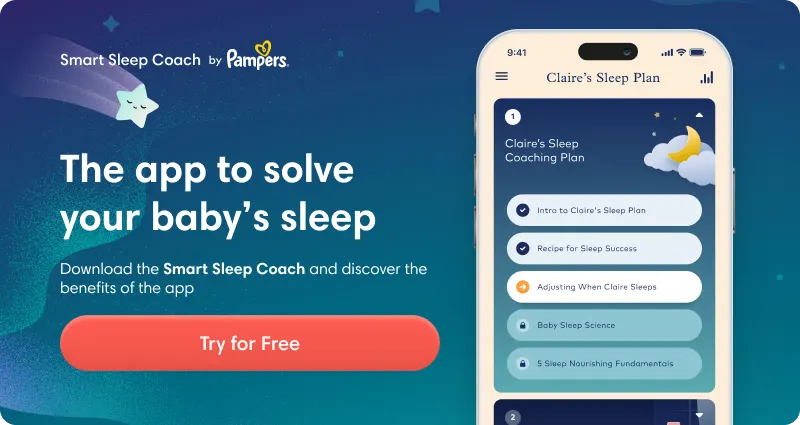How to Implement an Eat Play Sleep Schedule for Your Baby
What is an Eat Play Sleep Schedule for Your Baby?
The Eat Play Sleep schedule is a simple yet effective method to help your baby develop a daytime routine and build healthy sleep habits. With this schedule, your baby eats after waking up, then plays, and then goes down for a nap. This cycle repeats throughout the day until bedtime.
Why Should I Start an Eat Play Sleep Schedule?
Implementing an Eat Play Sleep schedule helps your baby consolidate their sleep, leading to longer stretches of sleep at night. This schedule also supports their development, providing structure to their day and helping regulate their internal clock.
How Do I Start an Eat Play Sleep Routine?
Starting an Eat Play Sleep schedule is straightforward. Follow these three steps:
Feed Your Baby: After waking up, the first thing you do is feed your baby. The amount they eat may change as they grow.
Play with Your Baby: After feeding, engage in playtime. This can include diaper changes, tummy time, singing, reading, or cuddling. Keep in mind that wake windows are short, especially for younger babies.
Put Your Baby to Sleep: As you approach the end of the wake window, look for sleepy cues and start preparing for the next nap.
What Age to Start an Eat Play Sleep Schedule?
Babies change rapidly in their early months. A newborn’s schedule can be unpredictable due to frequent feedings. However, establishing a routine, even if the times don’t always line up, can be beneficial.
Here’s a general guideline for wake windows and naps by age:
| Age | Wake Window | Sleeps |
|---|---|---|
| Newborn | 10 minutes - 2 hours | 4-5 naps+ |
| 1 month | 45 minutes - 1 hour 15 min | 4-5 naps+ |
| 2 months | 45 minutes - 1 hour 45 min | 4-5 naps+ |
| 3 months | 1 hour 15 min – 2 hours | 4 naps |
| 4 months | 1.5 - 2 hours | 3 naps |
| 5 months | 1.5 - 3 hours | 3 naps |
| 6 months | 2 - 3 hours | 3 naps |
| 7 months | 2 hours 15 min – 3.5 hours | 3 naps |
| 8 months | 2 hours 45 min – 3 hours | 3 naps |
| 9 months | 2 hours 45 min – 3.5 hours | 2 naps |
| 10 months | 3 – 4 hours | 1-2 naps |
| 11 months | 3 – 4 hours | 1-2 naps |
| 12 months | 3 hours 15 min – 4 hours | 1 nap |
Optimize Your Baby’s Sleep Environment
Ensure your baby’s room is dark and set to a comfortable temperature (68-72°F or 20-22°C). Follow safe sleep guidelines to create a secure sleep space.
Remain Consistent – but Flexible
Routines help your baby feel safe and cue sleep. Even if the exact times change, maintaining the Eat Play Sleep order helps your baby understand the difference between day and night.
Separate Day and Night
To help your baby recognize day from night, keep nighttime feedings quick and quiet, without playtime. Most babies continue nighttime feedings until about 9 months old.
Is an Eat Play Sleep Schedule for Babies Worth it?
The Eat Play Sleep schedule offers several benefits:
Provides a reliable routine, helping your baby feel secure and stable.
Focuses on eating, playing, and sleeping—key components of healthy growth and development.
Encourages sustainable sleep habits by separating feeding from sleeping.
However, it may not work for all babies. Some might find it difficult to stick to this schedule, and certain types of play before sleep can overstimulate them. If you face challenges, the Smart Sleep Coach app can help you track your baby’s sleep and provide tailored advice.
FAQS AT A GLANCE
After waking up, your baby should eat before playing. This helps ensure they don’t develop a habit of relying on feeding to fall asleep.
Conclusion
Figuring out a schedule for your young baby can be challenging, but the Eat Play Sleep schedule offers many benefits. It helps establish healthy habits from day one, supporting longer sleep stretches and healthy development.
While every baby is different, making adjustments to meet your baby’s unique needs is key. The Eat Play Sleep schedule is a great starting point for many families.
How We Wrote This Article The information in this article is based on expert advice from trusted medical sources like the American Academy of Pediatrics and the American College of Obstetricians and Gynecologists. Always consult medical professionals for diagnosis and treatment.

![[CA] WSD 1 - Baby World Sleep Day 1](https://images.ctfassets.net/2ql69mthp94m/41LJkNsvtsZMN716fbD3BQ/516c6979eb937cb9587b46106452ad17/WSD_-_Desktop_-_baby_sleeping.png?fm=webp&q=70)
